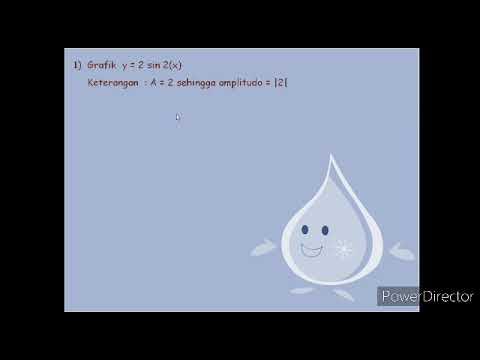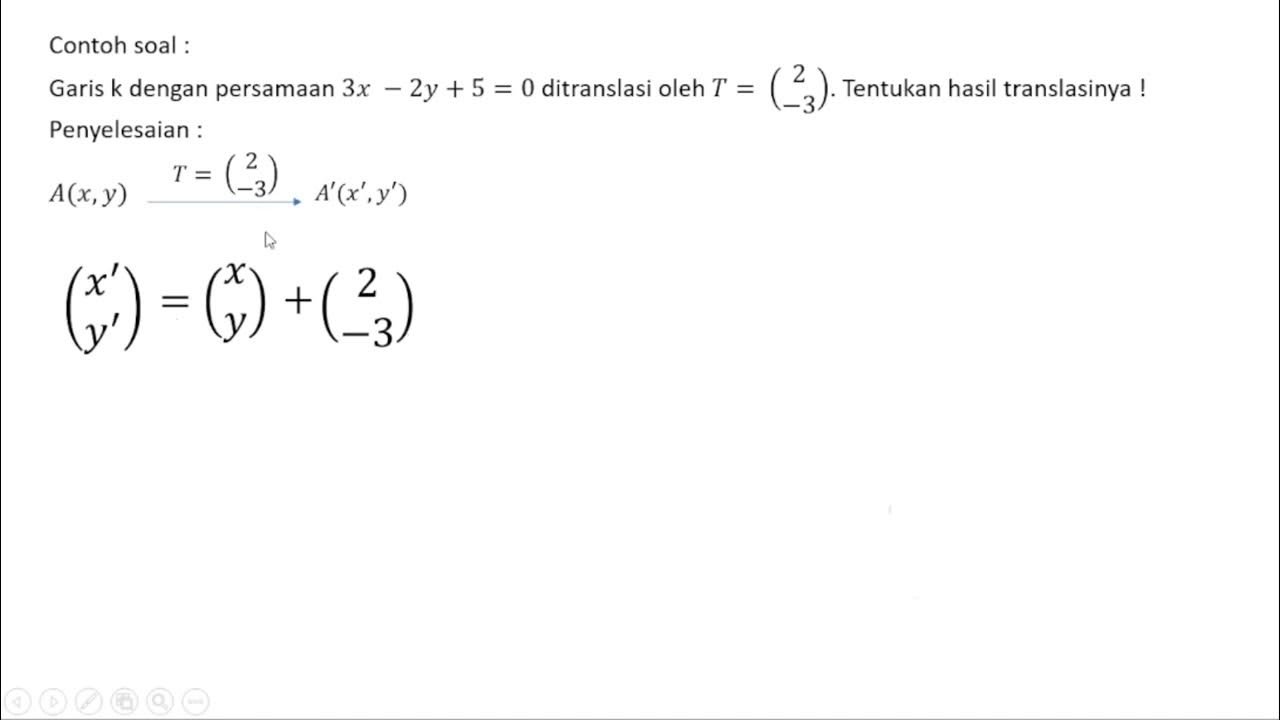Math 30-1 Lesson 1.1
Summary
TLDRIn this Math 30 lesson, the instructor introduces transformations, specifically horizontal and vertical translations. The lesson focuses on the concept of translations, emphasizing shifts in functions without stretching or flipping. Key topics include function notation changes, the roles of parameters in transformation, and mapping notation to understand how points shift. Through practical examples, the instructor explains how to shift functions left, right, up, or down using equations and function notation. The lesson also highlights transformations like vertical translations, with practical applications using the vertex form of quadratic functions.
Takeaways
- 😀 The first lesson in Math 30 focuses on horizontal and vertical translations, which refer to shifting graphs up, down, left, or right without any stretching or flipping.
- 😀 Translation in mathematics is defined as a shift of a function, either vertically or horizontally, without altering its shape or orientation.
- 😀 The lesson emphasizes that shifting a graph involves adjusting the parameters in the vertex form equation, which is written as y = a(x - p)^2 + q.
- 😀 The 'a' value in the vertex form affects vertical stretching and flipping of the graph. Larger absolute values of 'a' make the graph narrower, while negative 'a' values flip the graph.
- 😀 The 'p' value in the vertex form shifts the graph horizontally (left or right), with a positive p-value shifting it to the right and a negative p-value shifting it to the left.
- 😀 The 'q' value in the vertex form shifts the graph vertically, where a positive q-value moves it upwards and a negative q-value moves it downwards.
- 😀 The script introduces function notation (e.g., f(x), g(x), h(x)), which is used to express transformations in a general form, as opposed to using specific equations.
- 😀 The concept of transformations in function notation is expanded to describe how functions can be shifted or moved by modifying the equation (e.g., f(x) + 2 to move a graph up by 2 units).
- 😀 The lesson distinguishes between specific equation notation (e.g., y = x^2 + 3) and general function notation (e.g., f(x) = x^2 + 3), helping students understand how to apply transformations in both contexts.
- 😀 Mapping notation is introduced as a way to describe the actual transformation that occurs to each point on the graph, helping visualize how translations affect the function's coordinates.
- 😀 The script concludes with a conceptual problem about determining a vertical translation, using the point (2, 6) to calculate the value of the translation parameter (K) for a shifted parabola.
Q & A
What is the main topic of the lesson in the script?
-The main topic of the lesson is about horizontal and vertical translations, specifically how transformations, like shifts, affect the graphs of functions.
How are translations defined in this lesson?
-Translations refer to shifts of a function's graph up, down, left, or right, without any stretching, flipping, or other transformations. They simply move the graph without altering its shape.
What is the notation change mentioned in the script?
-The script mentions a change in notation from 'P' and 'Q' used in Math 20-1 to 'H' and 'K' for horizontal and vertical shifts in Math 30-1. These letters represent how the graph of a function is moved along the axes.
What effect does the 'a' value have in the equation?
-The 'a' value affects the vertical stretch or compression of the graph. If 'a' is greater than 1, the graph becomes steeper (stretching vertically), and if 'a' is between 0 and 1, it becomes wider (compressing vertically). If 'a' is negative, the graph is reflected across the x-axis.
How does the 'p' value affect the function's graph?
-The 'p' value shifts the graph left or right. A positive 'p' value shifts the graph to the right, while a negative 'p' value shifts it to the left.
What does the 'q' value do to the graph?
-The 'q' value shifts the graph up or down. A positive 'q' value moves the graph upwards, and a negative 'q' value moves it down.
How do horizontal translations work in function notation?
-Horizontal translations affect the input 'x' in the function. To shift a graph to the right by 3, the function notation becomes f(x - 3). To shift it left by 2, it would be f(x + 2).
What is the difference between function notation and equation notation?
-Function notation, like f(x), is a general way of referring to a function, while equation notation directly specifies a particular function with its transformations. For example, f(x) + 3 is a shift of the function f(x) upwards by 3 units, while y = x^2 + 3 specifically describes the graph of a parabola shifted up by 3.
What does mapping notation describe in transformations?
-Mapping notation describes how each point on the original graph is transformed. It shows the specific changes made to each coordinate. For example, if a function shifts right by 3 units, the mapping notation would indicate that every point (x, y) becomes (x + 3, y).
What is the purpose of using mapping notation in transformations?
-Mapping notation is useful for clearly understanding the effects of transformations on each point of the graph. It allows for quick calculation of transformed coordinates without having to graph the entire function.
Outlines

Dieser Bereich ist nur für Premium-Benutzer verfügbar. Bitte führen Sie ein Upgrade durch, um auf diesen Abschnitt zuzugreifen.
Upgrade durchführenMindmap

Dieser Bereich ist nur für Premium-Benutzer verfügbar. Bitte führen Sie ein Upgrade durch, um auf diesen Abschnitt zuzugreifen.
Upgrade durchführenKeywords

Dieser Bereich ist nur für Premium-Benutzer verfügbar. Bitte führen Sie ein Upgrade durch, um auf diesen Abschnitt zuzugreifen.
Upgrade durchführenHighlights

Dieser Bereich ist nur für Premium-Benutzer verfügbar. Bitte führen Sie ein Upgrade durch, um auf diesen Abschnitt zuzugreifen.
Upgrade durchführenTranscripts

Dieser Bereich ist nur für Premium-Benutzer verfügbar. Bitte führen Sie ein Upgrade durch, um auf diesen Abschnitt zuzugreifen.
Upgrade durchführenWeitere ähnliche Videos ansehen

Komposisi Translasi (Fungsi Trigonometri)

Unit 1 Lesson 10 Video Lesson IM® GeometryTM authored by Illustrative Mathematics®

Pengertian, Jenis, dan Grafik Fungsi Trigonometri (Matematika Peminatan Kelas XI BAB I Part I)

TRANSLASI (PERGESERAN) || TRANSFORMASI GEOMETRI

TRANSFORMASI FUNGSI PART 2 (TRANSLASI FUNGSI)

Horizontally launched projectile | Two-dimensional motion | Physics | Khan Academy
5.0 / 5 (0 votes)
